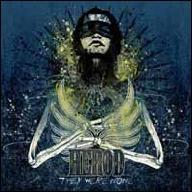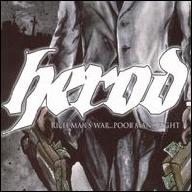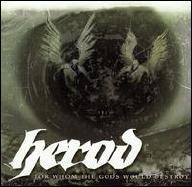Herod's original lineup was formed in Buffalo, NY, in late 2000 by drummer Mike Jeffers and guitarist Jesse Benker; back in Herod's metalcore days (when the band was often compared to Converge), the lineup also included lead singer Nate Seibel, bassist Joe Villella, and guitarist Chuck Palisano. In 2001, the original Herod recorded a demo, which Sounds of Revolution Records (a small Canadian label) released as the EP Sinners in the Eyes of an Angry God. That disc was followed by Herod's first full-length album, Execution Protocol, which came out on Too Damn Hype Records (a Philadelphia-based indie) in early 2002. Later that year, Villella and Palisano left the band; that's when bassist Jeremy Partlow and guitarist Bryce March came on board. Seibel remained until the summer of 2003, when he was replaced by Judah Nero (formerly of a Buffalo-based band called Plain of Ashes). Hardly a carbon copy of Seibel,Nero was perfect for the more melodic direction that Jeffers and Benker wanted for Herod -- and Lifeforce Records, the German label that had signed the band, approved.
With a totally different sound and the new Jeffers/Benker/Nero/March/Partlow lineup in place, Herod recorded For Whom the Gods Would Destroy in September and October 2003. When Herod toured the United States and Canada in late 2003, listeners who associated the Buffalo residents with Sinners in the Eyes of an Angry God and Execution Protocol were shocked by what they heard -- the ambitious new material wasn't metalcore, but rather drew on influences that ranged from Judas Priest and Iron Maiden to Pantera, Metallica, and Megadeth. Power metal was an influence, but so were thrash metal, punk, and hardcore. And even though Nero did some screaming on occasion, he didn't do nearly as much of it as Seibel. In various interviews, Jeffers and Benker made it abundantly clear that Herod would not be performing any of their old metalcore material on-stage and that they didn't expect Nero to sing anything from either Sinners in the Eyes of an Angry God or Execution Protocol. Lifeforce released For Whom the Gods Would Destroy in late January 2004. ~ Alex Henderson, Rovi














